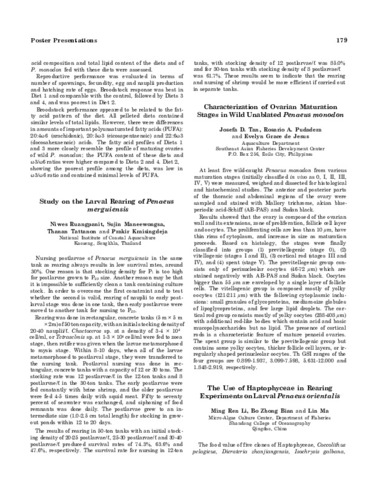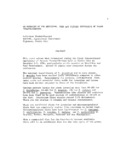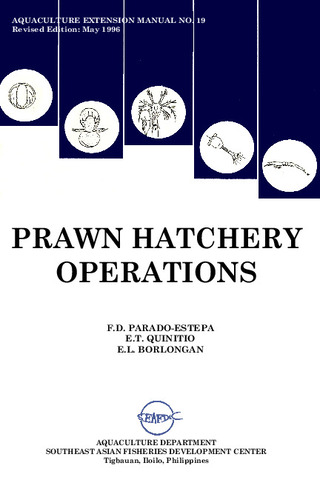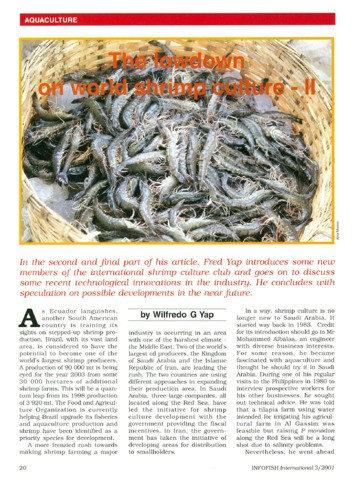Characterization of ovarian maturation stages in wild unablated Penaeus monodon
Share
Abstract
At least five wild-caught Penaeus monodon from various maturation stages (initially classified in vivo as 0, I, II, III, IV, V) were measured, weighed and dissected for histological and histochemical studies. The anterior and posterior parts of the thoracic and abdominal regions of the ovary were sampled and stained with Mallory trichrome, alcian blue-periodic acid-Schiff (AB-PAS) and Sudan black.
Results showed that the ovary is composed of the ovarian wall and its extensions, zone of proliferation, follicle cell layer and oocytes. The proliferating cells are less than 10 µm, have thin rims of cytoplasm, and increase in size as maturation proceeds. Based on histology, the stages were finally classified into groups (1) previtellogenic (stage 0), (2) vitellogenic (stages I and II), (3) cortical rod (stages III and IV), and (4) spent (stage V). The previtellogenic group consists only of perinucleolar oocytes (46-72 µm) which are stained negatively with AB-PAS and Sudan black. Oocytes bigger than 55 µm are enveloped by a single layer of follicle cells. The vitellogenic group is composed mostly of yolky oocytes (121-211 µm) with the following cytoplasmic inclusions: small granules of glycoproteins, medium-size globules of lipoglycoproteins, and few large lipid droplets. The cortical rod group consists mostly of yolky oocytes (288-408 µm) with additional rod-like bodies which contain acid and basic mucopolysaccharides but no lipid. The presence of cortical rods is a characteristic feature of mature penaeid ovaries. The spent group is similar to the previtellogenic group but contains some yolky oocytes, thicker follicle cell layers, or irregularly shaped perinucleolar oocytes. Th GSI ranges of the four groups are 0.899-1.937, 3.099-7.598, 5.631-12.000 and 1.848-2.919, respectively.
Description
Abstact only.
Suggested Citation
Tan, J. D., Pudadera, R. A., & De Jesus,E. G. (1985). Characterization of ovarian maturation stages in wild unablated Penaeus monodon (Abstract only). In Taki Y., Primavera J.H. and Llobrera J.A. (Eds.). Proceedings of the First International Conference on the Culture of Penaeid Prawns/Shrimps, 4-7 December 1984, Iloilo City, Philippines (p. 179). Iloilo City, Philippines: Aquaculture Department, Southeast Asian Fisheries Development Center.
Subject
Taxonomic term
Related items
Showing items related by title, author, creator and subject.
-
An overview of the nutrition, feed and feeding techniques of prawn penaeid/shrimps
Piedad-Pascual, Felicitas (Philippine Council for Aquatic and Marine Research and Development, 1989)This paper echoes what transpired during the first International Conference of Penaeid Prawns/Shrimps held in Iloilo City in December 4-7, 1984, particularly on the Nutrition nd Feed Development. Around 25 papers were ... -
Prawn hatchery operations
Parado-Estepa, Fe D.; Quinitio, Emilia T.; Borlongan, Emeterio L. (Aquaculture Department, Southeast Asian Fisheries Development Center, 1996-05)The manual, an updated version of the 1984 SEAFDEC/AQD manual, presents the underlying principles and step-by-step instructions of prawn larval and post-larval rearing. The techniques described are not only applicable to ... -
The lowdown on world shrimp culture - II
Yap, Wilfredo G. (INFOFISH, 2001)This paper introduces some new members of the international shrimp culture club and goes on to discuss some recent technological innovations in the industry, particularly the polyculture of tilapia (mainly Oreochromis ...





